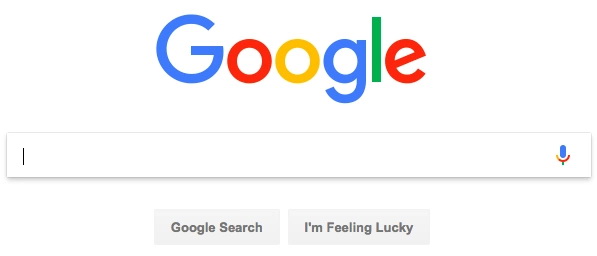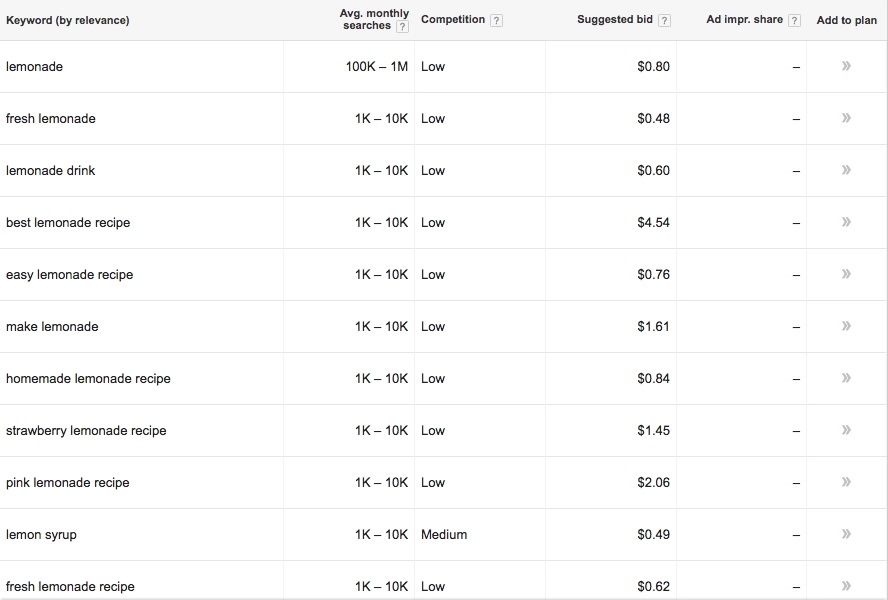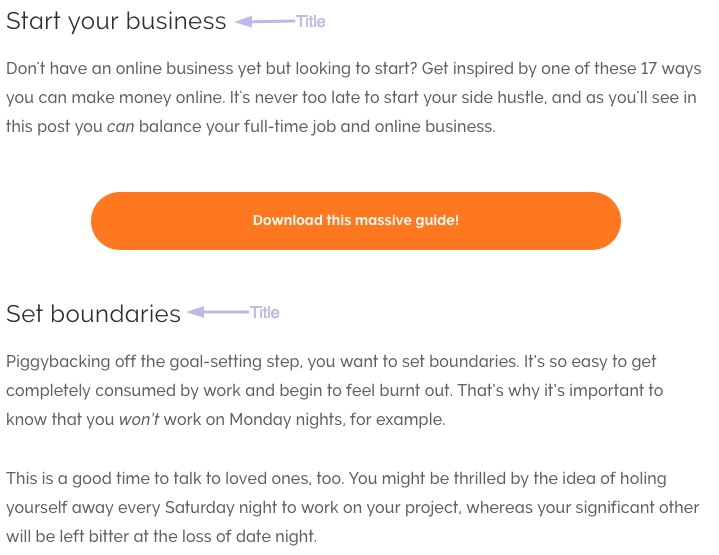It's 2025 and Google is still an integral part of nearly all our daily lives. But have you ever wondered how exactly Google decides what content to put in front of you after you make your query? In short, it has to do with search engine optimization or SEO. It’s how website owners signal to Google that what they've created is helpful to people looking for what they have to offer. To get your content in front of the right audiences, it’s important to understand SEO, and know how to use it, even as a beginner.
Google doesn’t want to surface unhelpful web pages, so it’s important to them to highlight the best of the best. It’s also important to you to show Google that you are the best of the best. You can do that by showing the search engines that what you’ve created is worth reading.

Is SEO complicated?
Actually, yes. With that said, most website owners don't have the basics covered enough to be concerned with the complicated parts.
So today, we’re going over the basics, talking about the easy to implement strategies, and helping you go from knowing very little about SEO to confidently optimizing everything that you publish.
Why is SEO important?
Website traffic is the life-source of your business, online. Without traffic (or website visitors), you don’t have customers, and without customers you’re not earning any money. Sure, you can get traffic through social media and email marketing (and you should!), but once you’ve optimized your site for Google, you can get passive traffic for years to come.
If you have multiple streams of traffic, some of them passive, you can still get traffic and thus sales that month. If you can get your content to rank on Google, you can almost guarantee a steady stream of traffic.

Can you DIY SEO?
You don’t need to pay an expert to optimize your site if you’ve got the time and drive to do it yourself. You can lay down the foundation for a strong SEO strategy on your own, and it doesn’t have to be headache inducing, either.
This guide will walk you through the foundations, but if you already consider yourself a pro, you can find more advanced strategies here.
The basics of SEO
Here’s where things might get confusing: Your friend, who may rank on the top of Google for a certain search term, may claim to know nothing about SEO. And that’s because most people are performing at least the very basic steps of optimizing their sites on accident.
If you’re creating high-quality content, you may accidentally rank on Google because you’re inadvertently using keywords and making your articles clear and concise. Don’t let that accidental success confuse you, though. SEO is important because for harder to rank for keywords, it’ll be nearly impossible to accidentally luck into ranking on the top of Google.
But what are keywords?
Keywords are the words and phrases people are going to be typing into Google to find your content. If your business is teaching people how to make lemonade, ask yourself what will people be searching for to find your content.
Here are a few example of keywords people might type in:
- “Lemonade”
- “How to make lemonade”
- “Lemonade recipe”
- “Homemade lemonade”
- “DIY lemonade recipe”
- “Easy lemonade recipe”
Those are the phrases you want to include in your lemonade post. As fancy as “refreshing citrus beverage” might sound, it’s not what people are going to be searching for.
Instead, they’re going to be using the simple phrases mentioned above. Although “lemonade” will be your main keyword, the others should still be included in your copy. Here’s an example what the introduction to an SEO optimized blog post on lemonade might look like:
- “My lemonade recipe is something I got from my grandmother. She was famous for her perfectly refreshing homemade lemonade, and every summer the grandkids would eagerly wait outside for the pitcher we knew she was making. Not only is it delicious, but her lemonade recipe is easy to make and low in added sugar. If you’re looking for how to make lemonade, let this be your end-all-be-all recipe. It’s that good.”
Something you might notice about the example paragraph is that “lemonade” is mentioned a number of times, but we haven’t keyword stuffed.
How to find keywords
You can go about finding keywords two ways: 1.) raking your own brain or 2.) using Google’s Keyword Planner.
Ask yourself every phrase people might realistically type into their search engines trying to find the exact content you’re providing. Those words and phrases will be your keywords. What’s more, Google’s Keyword Planner is not as intimidating as it might seem, and you can use this post to get started using and understanding it.
Here’s what our list of keywords might look like for my lemonade post. Our advanced SEO blog post can help you understand what this chart means.

What is keyword stuffing?
Sometimes online entrepreneurs try to get clever and trick the Google crawlers. They do this by “keyword stuffing” or inorganically smashing as many keywords into their posts and website as possible.
That might look like this:
- “If you love lemonade and want to make lemonade, this is my lemonade recipe. My grandma gave me this DIY lemonade recipe and it’s the best lemonade recipe and easiest lemonade recipe anyone who likes lemonade has ever tried. Lemonade is good and homemade lemonade is the best lemonade. This is how to make lemonade at home.”
This might sound like a good strategy, but the search engine crawlers are smarter than you might assume, and can usually figure out when someone is keyword stuffing.
Write for real people, not machines.
If it’s hard to read because you’ve inserted too many keywords, the search engine crawlers likely won’t respond well.
Long story short: Be authentic and use keywords where they naturally fit.
Long-tail keywords vs. short-tail keywords
There are two types of keywords: long-tail and short-tail. Long tail keywords are phrases like “homemade lemonade recipe” whereas short-tail keywords are singular words like “lemonade.”
You’ll rank for long-tail keywords before you rank for short-tail keywords because short-tail keywords have more competition.
For example, if you Google “lemonade” you’ll find results featuring Beyonce on the entire first page, then an insurance company, and eventually lemonade recipes.
On the other hand, if you Google a long-tail keyword like “how to make lemonade” you’ll find lemonade recipes right away.
That’s why using the keyword “lemonade” is not enough.
In addition to the short-tail keywords that people are searching, including the long-tail keywords in your website is absolutely essential if you want to be found.
How to use SEO the right way
Now that you’ve got a better understanding of what SEO is and how SEO works, we’re going to take you through what writing an search engine optimized blog post might look like. The same principles apply if you’re writing a static page for your website or a sales page, too.
Titles
Title text helps make your post easier to read and breaks up your content. Every page or post with more than just a few hundred words needs multiple titles, but you should have a title on every single post.

On your editor, this might look like heading tags. Headings are labeled as H1, H2, H3, etc. The lower the number, the larger the text.

For example, you see the large “Titles” heading above. That’s an H2 title and shows the search engines that everything below the title is talking about titles.
It’s also important to use titles that have your keywords in them. For example, this is how to break up the lemonade recipe post:
- H1: How to make lemonade at home
- H2: What you’ll need to make lemonade
- H2: How to make your lemonade
- H2: Extra ingredients you can add to your lemonade recipe
When you’re writing your titles, again, make sure you’re writing them for real people. Your H1 absolutely needs a keyword, but it’s up to you if keywords are necessary in your H2 titles.
Also, be sure to keep your H1 title under 65 characters. If it’s longer than that, Google will shorten it and make it harder to understand what your post is about. It may look something like: “How to make easy, delicious, nutritious, and….at home” with your keywords being hidden entirely.
Links
Search engines will see your blog post as being helpful if there are links to extra resources. These resources can be on your own site, or they can be on external websites, too. It might seem counterintuitive to drive traffic off of your website by linking externally, but it helps Google see your content as well rounded and credible.
External links
Linking externally can help you build credibility and traffic in three distinct ways:
From the user experience perspective, linking to other sources shows your audience that you’ve done your research, you know what you’re talking about, and you know the other experts in your area.
Think about writing a college paper. You’d bring in and credit outside sources to create a well-rounded, well thought out linking to other sources helps to build credibility for your content in the same way citing sources does for academic papers. Your visitors are more likely to trust what’s on the page if it makes references to notable and reliable websites.
From the SEO perspective, linking to authoritative sites that are also related to the topic that you’re optimizing for, gives a signal to search engines that your page is about something similar to other well-ranked pages. Word of caution: Don’t abuse this. Link when it organically makes sense, don’t spam a ton of outbound links just to increase your ranking.
From the marketing perspective, you can reach out to the authors or blog owners you’re linking to. Best case scenario, they share the post you’ve written with their audience or link back to your page.
If we were adding external links to the post on how to make lemonade, a few sites we’d link to are:
- A site listing the health benefits of lemonade
- A resource where someone can buy a lemon juicer
- Pretty mason jars to house your lemonade
Internal links
Internal links make it easy for visitors to find other useful content within your site, which increases the time on site and pages per visit while decreasing bounce rates.
They also boost the SEO value of other pages on your website. Internal linking is important in creating a “web” of options for your audience to take when exploring your site. The more opportunity you give them to remain on your website, the higher the chance that they’ll stick around.
If we were adding internal links to the post on how to make lemonade, a few sites we’d link to are:
- The best raspberry muffins (to pair with the lemonade)
- My top 8 recipes using lemons
- How to incorporate fresh fruit into your diet
Your meta description
Your meta description is the phrase beneath your page title on Google. It looks like this:

Although your meta description doesn’t directly impact your ranking on search engines, it does increase the likelihood that people will click through. If your meta description included the word or phrase the searcher put into the search bar, those words will be highlighted on the results page.
Your meta description doesn’t need to focus on keywords, instead it needs to be a clear description of what your post is about and it should be enticing.
Here’s an example of our meta description for the lemonade post:
Learn how to make the best homemade lemonade you’ll ever try. From sourcing the ingredients to the final touches, this post takes you through every single step you’ll need to take.
Images
Search engines can’t necessarily see the images that you include in your posts, so you need to give them a clue on what your images are, and how they fit into your post or web page.
The easiest way to do that is the image titles. When you’re exporting them from photoshop or canva, don’t save them as “img_612,” instead be clear. For our example post, try “lemons for lemonade,” citrus juicer,” and “finished lemonade.”
Now, when search engines crawl the site, they’ll know what the images are and how they relate to the content.
You can also usually change the “alt-text” in the advanced settings of your content management system. Here you can be even more descriptive. Tip: Give all of the images the same description here, as the advanced description is also what Pinterest pulls for the caption of images people pin from your website.
Success is slow—and that’s OK
You need to give the crawlers time to index your site and the algorithm time to boost your ranking. Perfect on-page SEO isn’t the only factor that search engine crawlers take into account. They’ll also analyze how long people are staying on your website, how fast or slow your page load time is, and how many people are sharing or linking to your posts.
All of the above factors can positively or negatively affect your ranking. With that said, if you’re writing high quality and optimized content, people are more likely to stick around and share which is a promised boost.
Join more than 150,000 creators who use Teachable to make a real impact and earn a real income.


